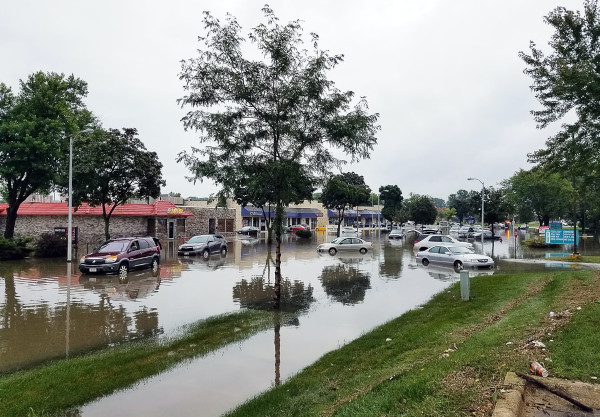How Long Does Water Damage Restoration Take?
Water damage due to flooding or pipe leaks is among the worst disasters that can affect your home, ruining personal belongings and causing extensive property damage. Because of these destructive effects and their time-sensitive nature, you should take immediate action to remediate water damage. The more time water stays in your property, the more damage.
Identifying and fixing the cause of water damage is the first step towards water remediation. You should then focus on draining any accumulating water and dry the affected areas. Unfortunately, it is impossible to tell how long water damage restoration will take, unlike other natural disasters.
However, in general, water-damaged homes can be restored between 2 and 5 days or several weeks, depending on the extent of the damage. Read on to understand what affects drying time and the water damage restoration process.

Factors Affecting Water Restoration Time
As mentioned, how long water damage restoration takes isn't definite. Below are some factors to consider when estimating the amount of time it might take;
- Amount of water that affected your home - obviously, you will need more time to restore a home with excessive water leakage. Pumping a few inches of water out takes a few hours. However, you will need several days to restore a house with four or more feet of stagnant water.
- Source of water damage - water damage can occur from many causes. Water damage from a burst pipe or local rains can easily be contained and restored. On the other hand, water damage from overflowing rivers and lakes might take more time. Besides, the latter contains more contaminants, making it harder to restore the affected unit.
- Nature of the damaged materials - the type of water-damaged materials also affects the drying time. Carpets and upholsteries take longer than plastic and metal materials. You should also consider the nature of building materials. Restoring wood floors and drywall is harder than stone walls.
- Drying equipment - your choice of drying equipment also influences the restoration time. Ordinary fans take longer to dry water compared to dehumidifiers and high-volume fans.
Water Damage Restoration Steps
Regardless of the time taken, water damage restoration follows the following steps;
Assessment/Inspection
Damage assessment is the first step and most important step. Restoration experts conduct a detailed inspection using advanced tools, such as moisture detectors and hygrometers, to identify the source of water, contamination level, and extent of water damage in your home. Restoration professionals pinpoint the exact location of damage and classify them into one of the four levels of water damage. Professionals can estimate the cost and time it will take to restore your home after this step.
Water Removal
Water extraction is the second step that involves removing stagnant water in your home to prevent further damage. Water removal can be achieved through various methods depending on the type of water in your home. Just to mention, there are three categories of water that can cause water damage. They include clean water, gray water, and black water. Professionals use appropriate water removal techniques depending on the type of water in your home.
Most water restoration experts use powerful extractors to quicken water removal and minimize damage. Common extractors used include truck-mounted vacuums, submersible pumps, and portable wet/dry vacuums.
-
Drying and Dehumidifying
Restoration companies begin drying or dehumidifying after successfully extracting accumulating water. For this, industrial-grade dehumidifiers are used to dry wet materials that proved challenging during extraction. While some materials may appear dry, they might still be wet to touch and may promote mold growth if not dried properly. Remediation experts monitor moisture levels closely during this stage to ensure that your home is perfectly dried.
Cleaning and Sanitizing
Professional cleaning is an important step in the restoration process. Experts should ensure that they preserve your personal property as much as possible during this step. As such, it should be performed by trained individuals who understand safety and sanitization procedures.
Remediation personnel may use foam, immersion, or abrasive cleaning techniques depending on the nature of the surface to be cleaned. Mold remediation is also done if necessary. Damaged materials are also discarded at this stage.
Restoration
Restoration is the final step in the water damage restoration process. Here, experts work towards returning your home to its initial state of normalcy. Any damaged materials are fixed, replaced, or removed. The restoration process can be simple or extensive, depending on the extent of the damage.
Call Water Damage Restoration Professionals
Water damage is a serious disaster that shouldn't be handled lightly. While you can handle a few gallons of water, four or five inches of water requires intervention by professionals. Working with water damage restoration experts provides assurance that your damaged property will be remediated according to the IIRCR standards.